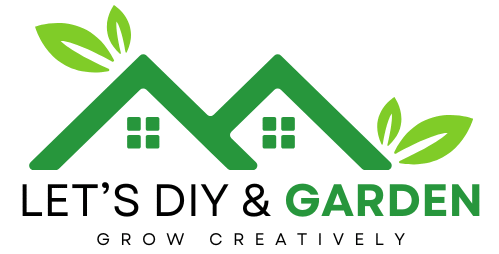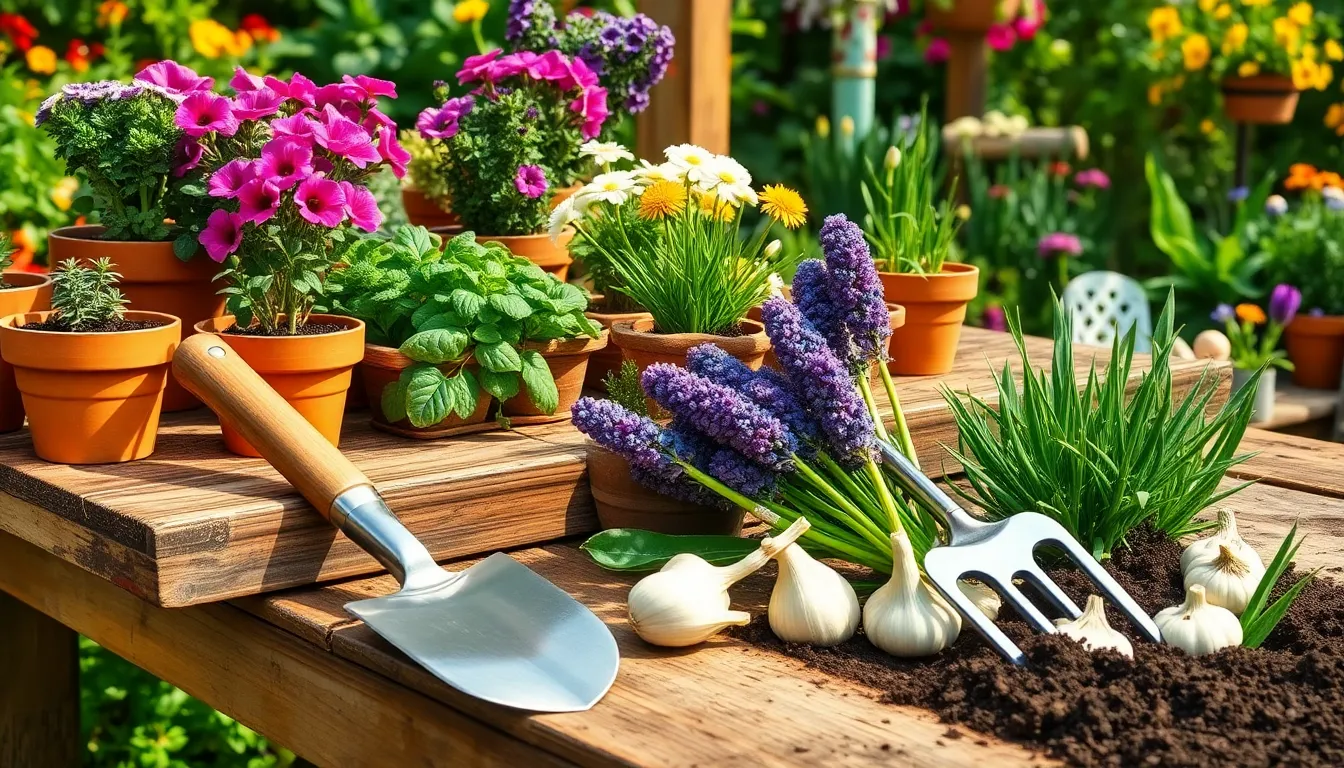Gardening is a journey filled with blooms of joy and the satisfaction of watching your hard work come to life. Whether you’re just starting out with a small patch or have years of experience under your belt, the right tools can transform your gardening experience, making each task more efficient and enjoyable.
In “Top 10 Gardening Tools Every Gardener Needs,” we’ve curated a list that will equip you with essentials to tackle any gardening challenge. These tools are the unsung heroes that help cultivate not just plants, but also your confidence as a gardener, ensuring your efforts yield bountiful rewards.
With the right tools in hand, you’ll find that gardening can be as easy as it is delightful. So, step into your garden with enthusiasm, knowing that you’re well-prepared to nurture your green oasis through every season.
Pruning Shears (Precision Cutting for Healthier Plants)
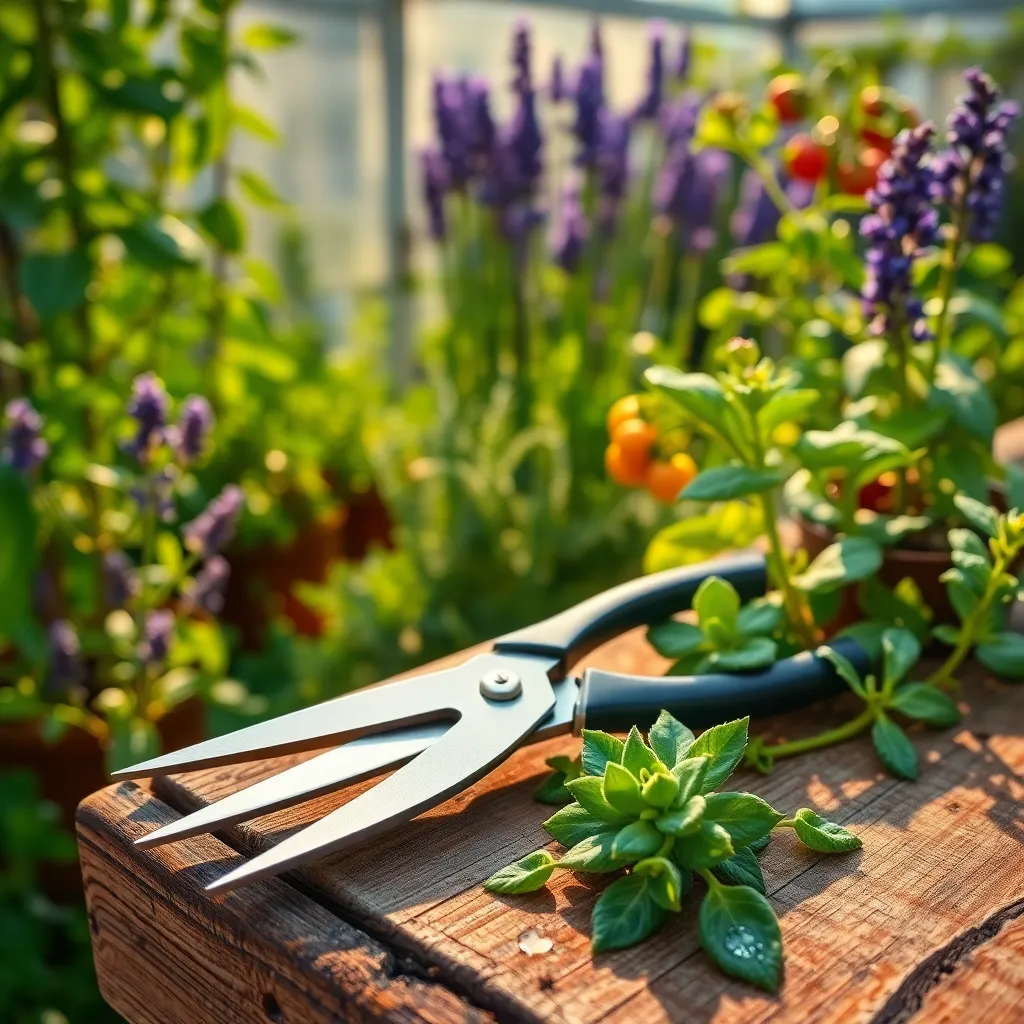
Pruning shears are essential tools for gardeners who want to keep their plants healthy and thriving. They allow for precise cuts, ensuring minimal damage during the pruning process. For beginners, it’s important to understand that pruning is not just about shaping plants but also about promoting new growth and removing dead or diseased branches. Regular pruning with sharp shears can improve air circulation within the plant, reducing the risk of disease.
When choosing pruning shears, look for ones with a comfortable grip and sharp blades. A high-quality pair will stay sharp longer and make cleaner cuts, which is crucial for the plant’s healing process. For those managing larger shrubs or trees, consider bypass shears, which function like scissors and are ideal for live branches. On the other hand, anvil-style shears are better suited for cutting dry, woody branches.
Always sterilize your shears before and after use to prevent the spread of diseases between plants. A quick dip in a solution of one part bleach to ten parts water is an effective method. For advanced gardeners, mastering the technique of thinning cuts can promote a more open plant structure and improve light penetration. This technique involves removing entire branches at their base, which can be particularly beneficial for fruit-bearing plants.
Regular maintenance of your pruning shears will extend their lifespan and effectiveness. Sharpen blades at least once a season, and oil the pivot points to keep the action smooth. For gardeners striving for precision and plant health, keeping their tools in top condition is just as important as their gardening skills. By using pruning shears correctly, gardeners can enjoy healthier plants and more bountiful blooms.
Garden Trowel (Versatile Planting and Transplanting Tool)

The garden trowel is an essential tool for both planting and transplanting, making it a must-have for every gardener. Its small size and versatile design allow you to work with precision, whether you’re digging holes for seedlings or transferring plants to new locations.
For planting, ensure you choose a trowel with a sturdy, pointed blade that can easily cut through different soil types. Clay-heavy or compacted soils may require a trowel with a more robust handle to provide the necessary leverage and avoid hand fatigue.
When transplanting, use the trowel to gently loosen the soil around the plant’s roots, minimizing damage during the process. Beginners should pay attention to watering the plant before and after transplanting to reduce transplant shock, while experienced gardeners might consider adding a root stimulator to encourage healthier growth.
Consider the handle material for comfort, as a well-designed grip can significantly improve your gardening experience. Look for trowels with ergonomic handles made from materials like rubber or wood to prevent blisters during extended use.
Compost Bin (Eco-Friendly Waste Management)
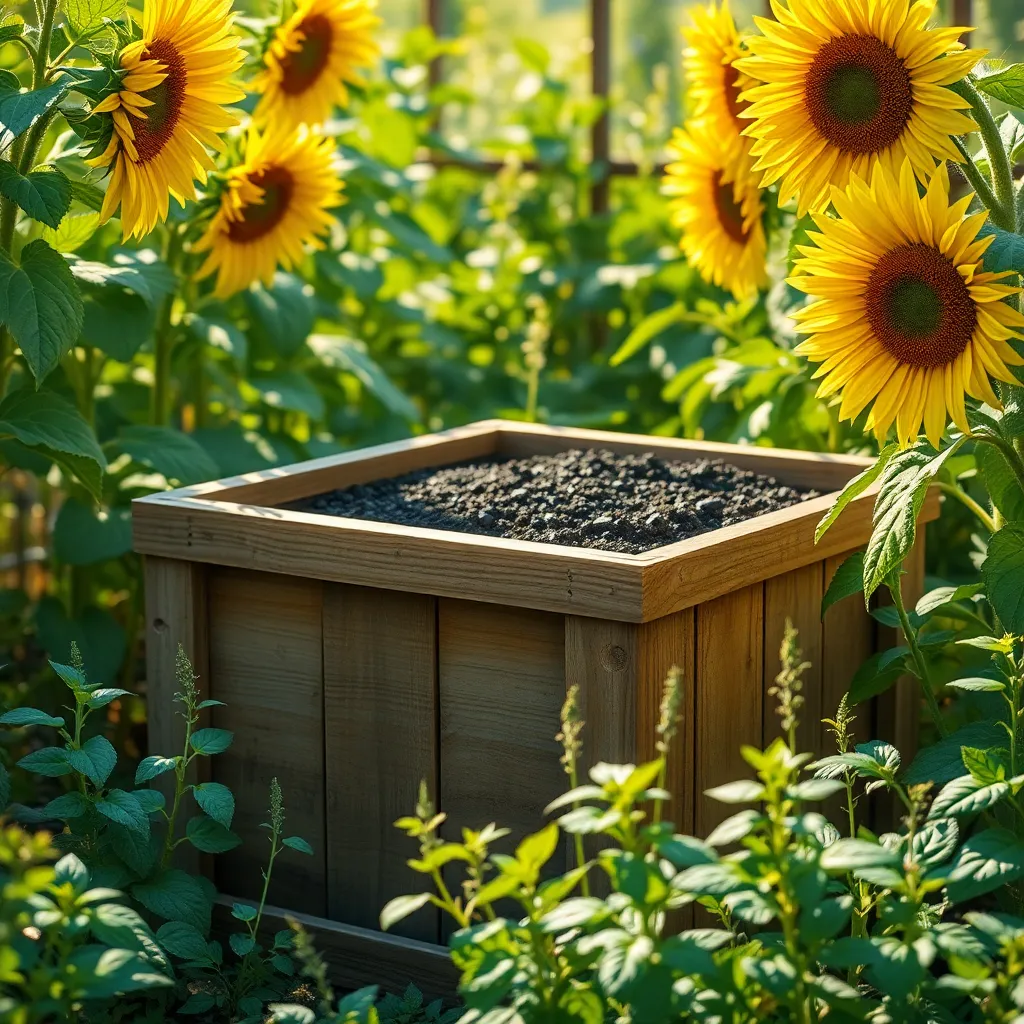
A compost bin is an essential tool for any gardener looking to manage garden waste in an eco-friendly way. By converting kitchen scraps and garden clippings into rich compost, you can enhance soil quality while reducing landfill waste.
Start with a simple compost bin that suits your garden size and needs. There are many options, from tumblers for quick results to stationary bins for larger volumes of material.
To create effective compost, balance your green and brown waste materials. Green materials like vegetable scraps and lawn clippings add nitrogen, while brown materials like dried leaves and straw provide carbon.
Turn your compost regularly to ensure proper aeration, which speeds up the decomposition process. In about six months, you’ll have nutrient-rich compost ready to revitalize your garden soil.
Wheelbarrow (Efficient Transport for Heavy Loads)
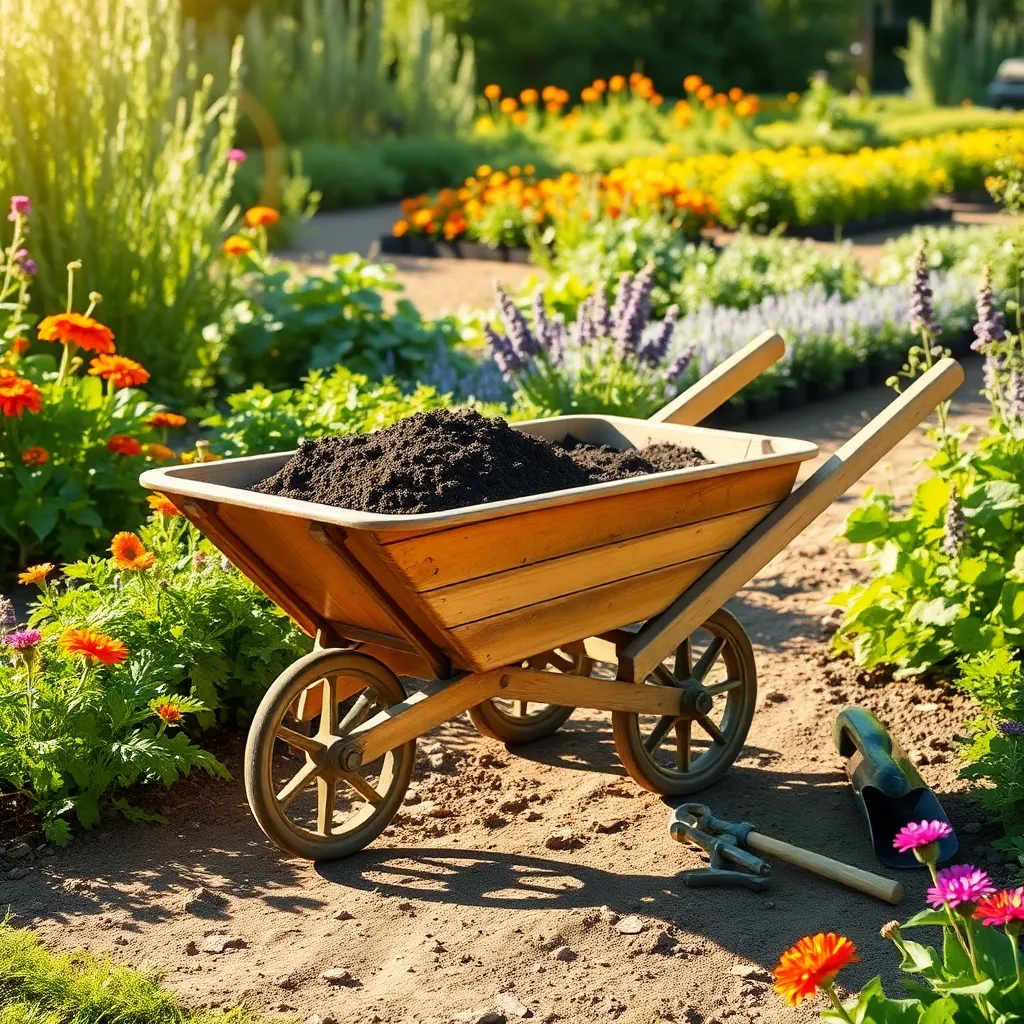
Using a wheelbarrow can make transporting heavy loads in your garden a breeze. This simple tool is designed to save you time and effort, especially when moving soil, mulch, or compost.
For beginners, invest in a wheelbarrow with a sturdy construction, ideally with a rust-resistant frame and pneumatic tires for easier maneuverability. Consider the terrain of your garden; a single-wheel design offers great control, while a dual-wheel model provides stability on uneven ground.
Incorporating a wheelbarrow into your gardening routine can enhance your productivity significantly. Begin by loading heavier items at the front of the wheelbarrow to maintain balance and prevent tipping.
Advanced gardeners might appreciate wheelbarrows with additional features, such as foldable handles for easy storage or a dumping mechanism for quick unloading. When transporting delicate plants, cushion them with soft materials like towels or blankets to prevent damage.
Keep your wheelbarrow in top condition by regularly checking the tire pressure and cleaning the bed after each use. A well-maintained wheelbarrow will last for years, becoming an indispensable asset in your gardening toolkit.
Garden Hose with Adjustable Nozzle (Customizable Watering)
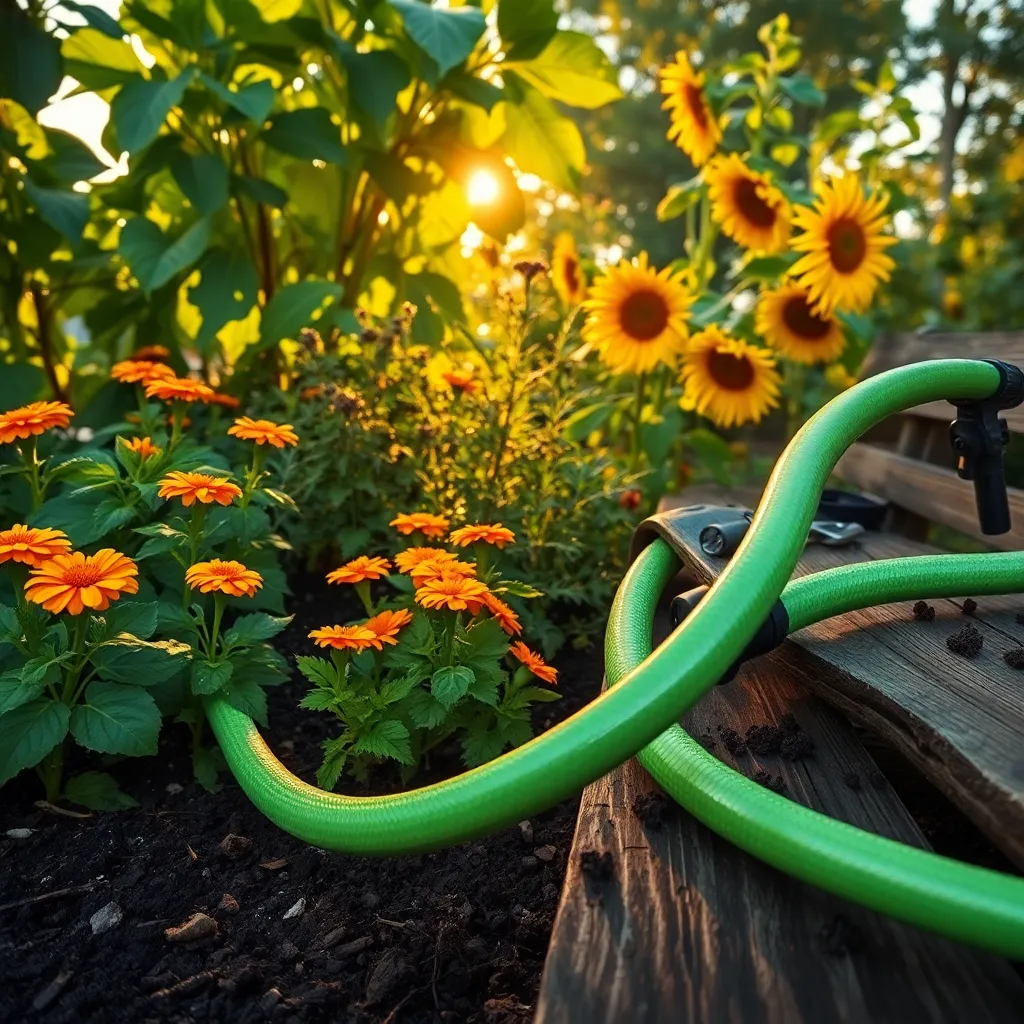
Adding a garden hose with an adjustable nozzle to your gardening toolkit can significantly enhance your watering efficiency. Adjustable nozzles allow you to customize the water flow, which is essential for meeting the specific needs of different plants.
For delicate seedlings, use a gentle mist setting to avoid damaging tender growth. On the other hand, opt for a more robust stream to effectively wash dirt off paths or water larger shrubs and trees.
This tool is particularly useful during dry spells when precise watering is vital to conserve water. Watering deeply but less frequently encourages roots to grow deeper, helping plants become more drought-tolerant.
Advanced gardeners can experiment with the nozzle settings to simulate natural rain patterns, promoting healthier plant growth. Pair your garden hose with a soaker attachment to ensure even water distribution in rows of vegetables or flower beds.
Soil pH Tester (Essential for Optimal Plant Growth)

Understanding soil pH is crucial for optimal plant growth and health. A soil pH tester helps you determine whether your soil is acidic, neutral, or alkaline, allowing you to tailor your gardening practices accordingly.
Begin by testing your soil to identify its pH level, which can vary greatly depending on location and environmental factors. For most plants, a pH range of 6.0 to 7.5 is ideal, but certain plants like blueberries and azaleas thrive in more acidic conditions.
Regularly testing your soil can help you make informed decisions about fertilization and soil amendments. If your soil is too acidic, adding lime can raise the pH, while sulfur or organic matter like peat moss can help lower it.
For experienced gardeners, understanding the pH can also aid in diagnosing plant health issues. Nutrient availability is often linked to pH levels, and adjusting them can resolve problems like yellowing leaves or stunted growth.
Use a reliable soil pH tester, whether it’s a digital meter or a simple pH kit, to ensure accuracy. Remember, maintaining the right soil pH is not a one-time task but an ongoing process to keep your garden thriving.
Kneeling Pad (Comfortable Support for Extended Gardening)
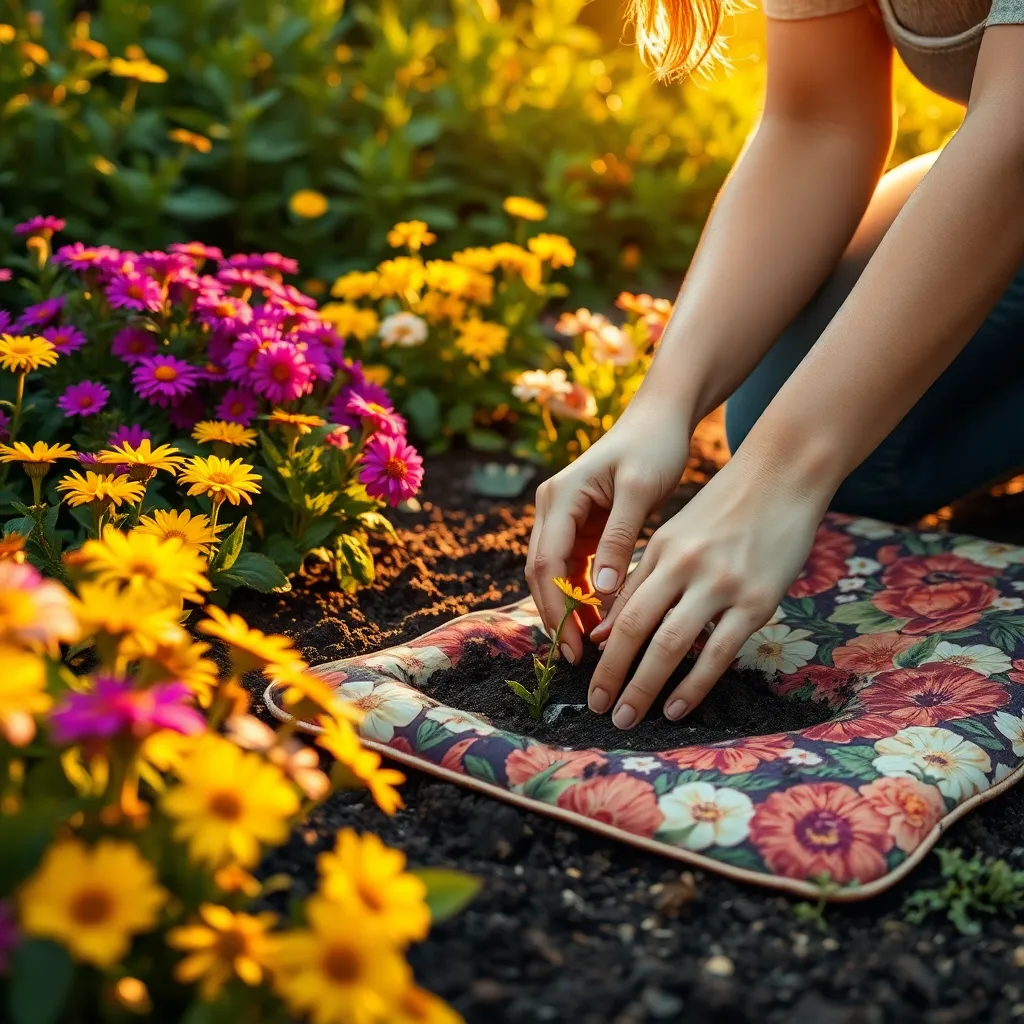
Gardening can be a rewarding yet physically demanding activity, which is why a kneeling pad is an essential tool for comfort and support. These pads provide cushioning that reduces strain on your knees and back, allowing you to work longer in the garden without discomfort.
A good kneeling pad is made from durable, water-resistant materials, ensuring longevity even when used in damp conditions. Look for pads with a thickness of at least one inch for optimal cushioning, and consider those with a built-in handle for easy portability.
For beginners, using a kneeling pad not only protects your knees but also encourages proper posture while planting or weeding. Advanced gardeners will appreciate the versatility of these pads, as they can be used for various tasks beyond gardening, such as household cleaning or DIY projects.
When selecting a kneeling pad, consider its size and weight to ensure it meets your gardening needs. Lightweight options are ideal for transporting between different garden areas, while larger pads offer more space for kneeling, accommodating a wider range of activities.
Gardening Gloves (Durable Protection for Hands)
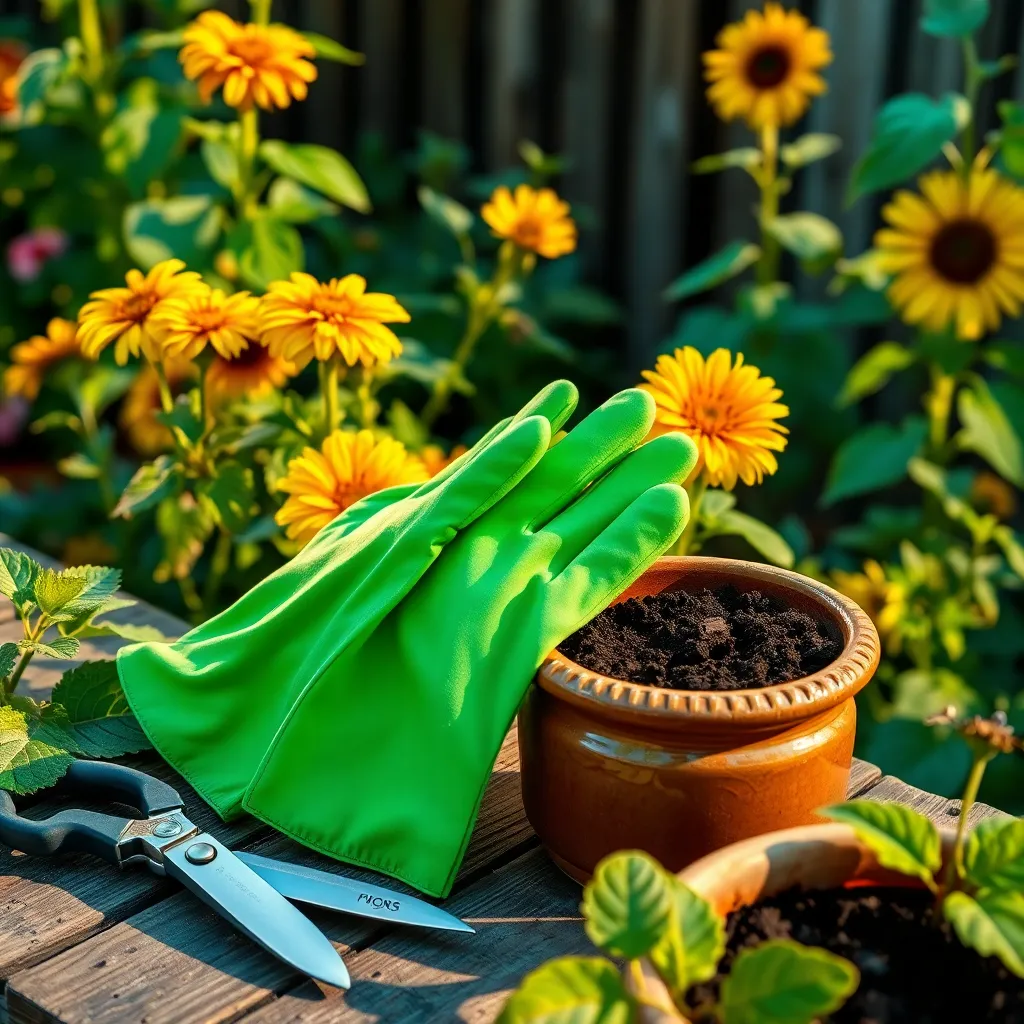
Gardening gloves are an essential tool for protecting your hands while working in the garden. Choosing the right pair of gloves can make a significant difference in comfort and safety, especially when handling thorny plants or rough materials.
Look for gloves made of durable materials like leather or reinforced cloth to ensure they last through multiple seasons. Leather gloves provide excellent protection against thorns and sharp tools, while breathable fabrics are ideal for working in hot or humid conditions.
When selecting gardening gloves, consider the types of tasks you perform most frequently. For those working with delicate seedlings or intricate tasks, gloves with a snug fit and good dexterity are crucial, allowing for precision without sacrificing protection.
Advanced gardeners might invest in specialized gloves that offer additional features like waterproofing or extra grip. Gloves with reinforced fingertips can be particularly useful when planting bulbs or pulling weeds, providing added durability where it’s needed most.
Seed Starter Kit (Jumpstart Your Garden Indoors)
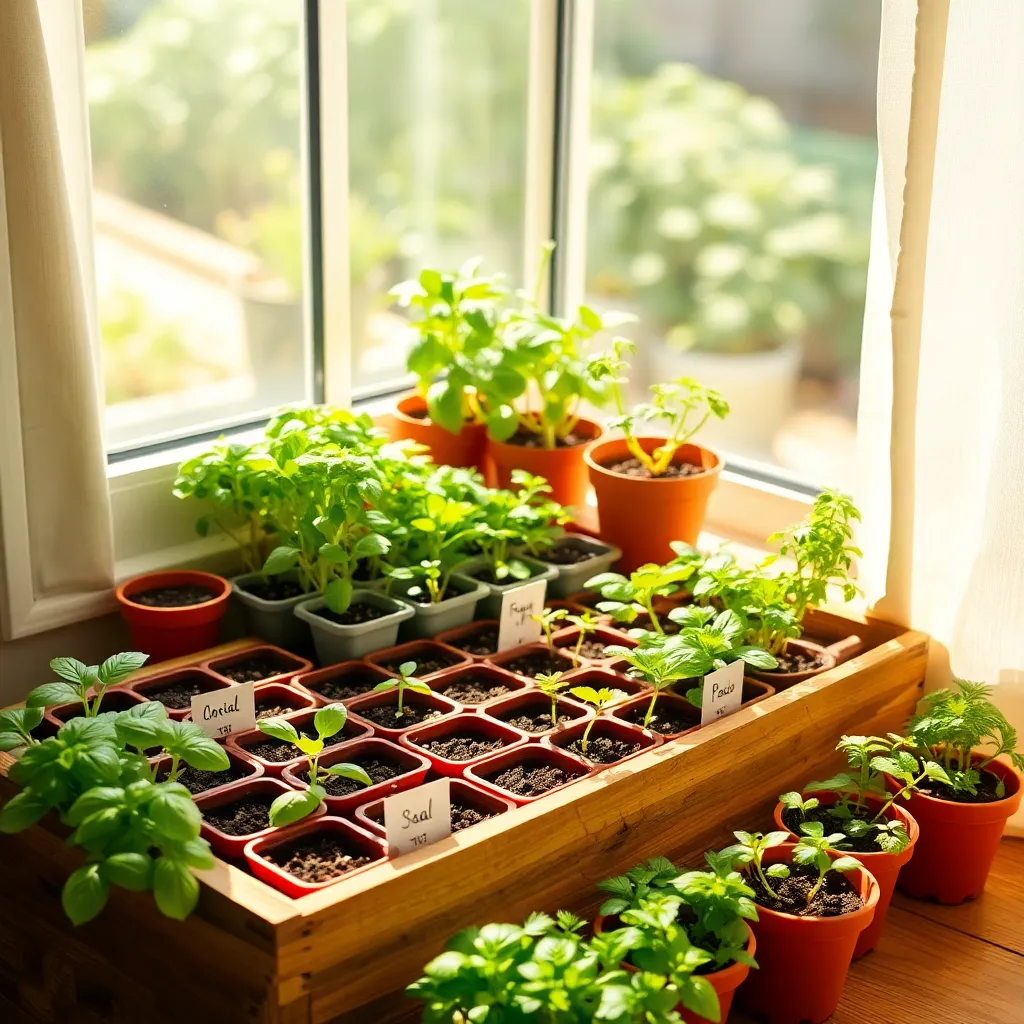
To kick off your gardening journey indoors, a seed starter kit is an invaluable tool. It provides everything you need to nurture seedlings before they’re ready for the outdoors, offering a jumpstart on the growing season.
Start by selecting high-quality seed starter trays and a reliable grow light system. These tools ensure that your seeds receive the optimal amount of light and space, fostering strong and healthy growth right from the start.
Utilizing the right soil mix is crucial; opt for a sterile, lightweight seed-starting mix to encourage root development and prevent diseases. Water your seedlings gently and consistently, keeping the soil moist but not waterlogged to support their delicate early stages.
For advanced gardeners, consider adding a heat mat beneath your trays to maintain a consistent soil temperature, speeding up germination for warmth-loving plants. Additionally, keep a fan nearby to circulate air, helping to prevent mold and strengthen seedlings with gentle airflow.
Garden Fork (Effective Aeration and Soil Management)
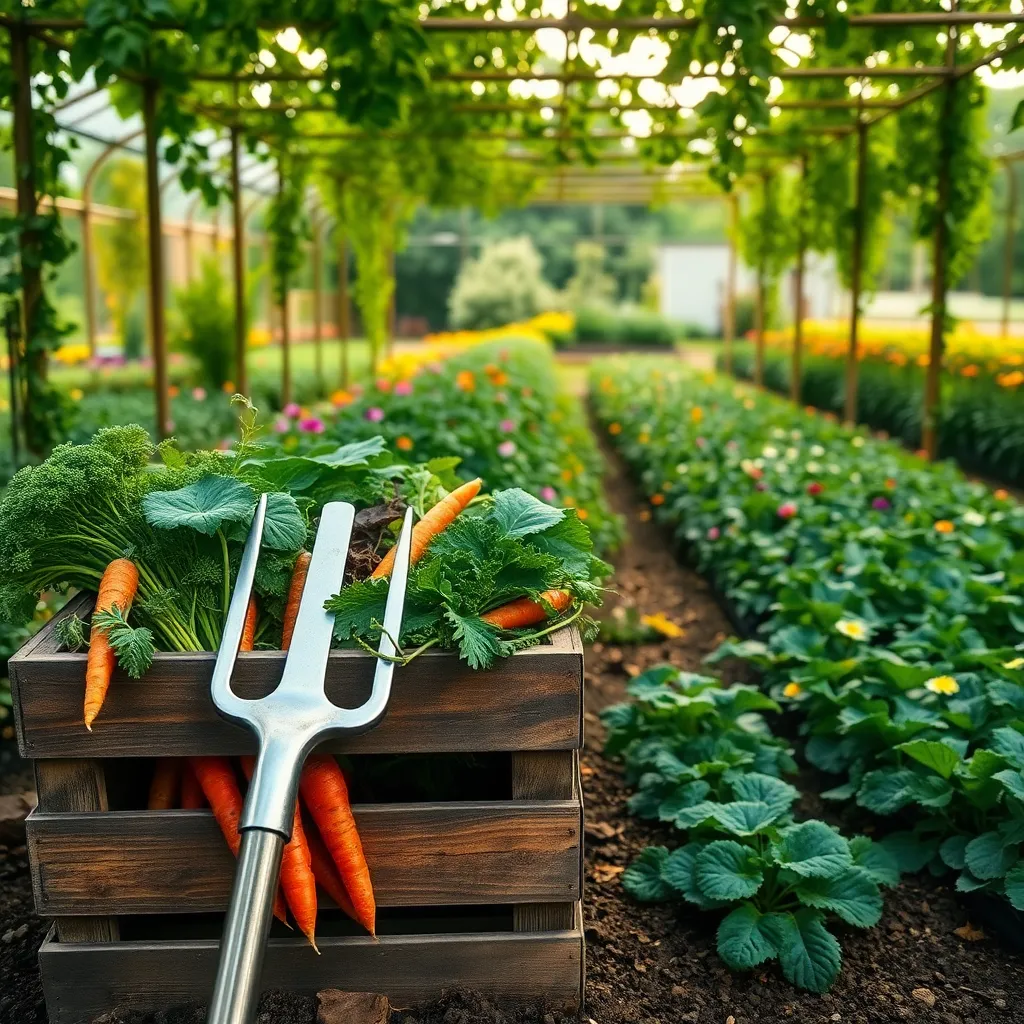
A garden fork is an indispensable tool for effective aeration and soil management, making it a must-have for any gardener. Its sturdy tines help break up compact soil, improving drainage and allowing roots to access the nutrients they need.
When using a garden fork, gently insert it into the ground and rock it back and forth to loosen the soil without disturbing the plant roots. This method is ideal for preparing beds for planting, especially if you’re transitioning from a lawn to a garden bed.
For beginner gardeners, focus on using the fork to mix in compost or organic matter, enhancing soil fertility and structure. Experienced gardeners can use it to turn over cover crops or incorporate green manure, enriching the soil with nitrogen and other nutrients.
Consider the soil type in your garden when choosing a garden fork, as heavier clay soils may require a fork with thicker, more robust tines. Regular use of a garden fork not only enhances soil health but also reduces the need for chemical fertilizers, promoting a more sustainable gardening practice.
Conclusion: Growing Success with These Plants
In the nurturing world of gardening, much like in relationships, having the right tools can make all the difference. We’ve explored ten essential tools: the versatile hand trowel, the trusty pruning shears, the reliable garden fork, the efficient garden hose, the indispensable weeder, the protective garden gloves, the transformative rake, the supportive wheelbarrow, the precise garden hoe, and the helpful watering can. Each tool plays a vital role, echoing the key relationship concepts of communication, support, growth, and care.
To cultivate your own flourishing relationships, take the immediate step of identifying which “tools” you currently possess and which you might need to acquire or sharpen. Open a conversation with your partner or loved ones about which areas could use some extra attention or improvement.
Remember, healthy relationships, like thriving gardens, require ongoing effort and attention. Bookmark this article as a handy reference to remind yourself of the essentials that foster growth and connection. With the right tools in hand, you’re already well on your way to nurturing enduring and rewarding relationships. Embrace this journey with confidence and watch as your relationships blossom in beautiful and unexpected ways.
